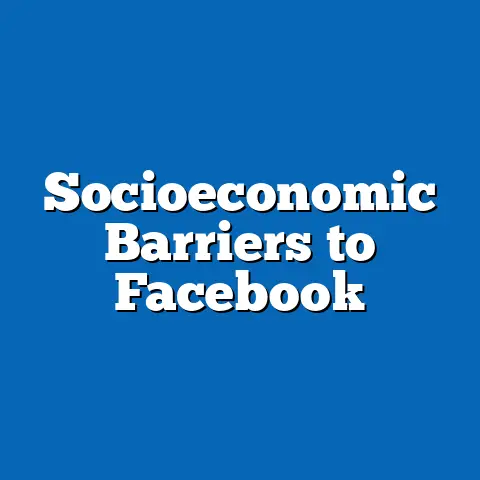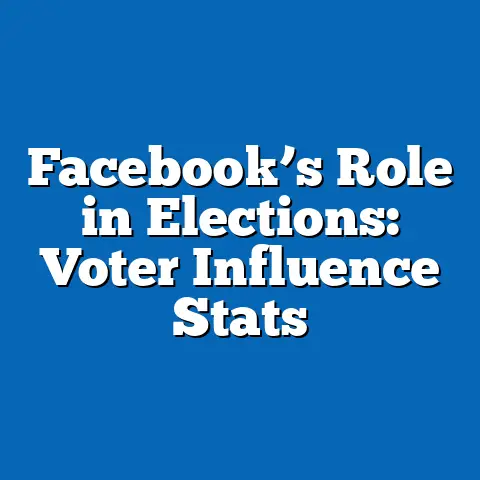Global Facebook Divide by Region
The Global Facebook Divide by Region in 2024: A Must-Have Perspective on Digital Connectivity
Executive Summary
In an era where digital platforms shape social interactions, commerce, and political discourse, understanding the global distribution of Facebook usage is no longer optional—it is a must-have for policymakers, businesses, and researchers alike. As of 2024, Facebook remains the world’s largest social media platform with over 3 billion monthly active users (MAUs), but its penetration and influence vary dramatically across regions. This article uncovers stark disparities in access, usage patterns, and demographic engagement, revealing a “Global Facebook Divide” that mirrors broader socioeconomic and infrastructural inequalities.
Key findings indicate that while Asia-Pacific accounts for nearly 50% of global Facebook users (1.5 billion MAUs), its penetration rate lags behind North America and Europe due to uneven internet access. Conversely, North America, with just 8% of global users (240 million MAUs), boasts an 85% penetration rate among its online population. Demographic projections for 2024 suggest that Africa, despite having the lowest current user base (300 million MAUs), will experience the fastest growth rate at 12% annually, driven by expanding mobile connectivity and a youthful population. These trends have profound implications for digital equity, targeted marketing, and the spread of information—or misinformation—across regions.
Introduction: Why the Global Facebook Divide Matters
Facebook is more than a social network; it is a digital infrastructure that influences economies, cultures, and governance worldwide. As of 2024, the platform’s reach extends to nearly 40% of the global population, yet this reach is far from uniform. Understanding the regional disparities in Facebook usage—the Global Facebook Divide—is critical for addressing digital inequality, crafting effective communication strategies, and anticipating future growth patterns.
This divide is not merely a matter of user numbers; it reflects deeper issues of internet access, economic development, and cultural adoption. For instance, while high-income regions like North America and Western Europe approach saturation, low-income regions in Africa and parts of Asia struggle with basic connectivity. These gaps have cascading effects on education, political engagement, and economic opportunity in the digital age.
Key Findings: The Global Facebook Landscape in 2024
-
User Distribution: Asia-Pacific dominates with 1.5 billion MAUs, representing 50% of global users, followed by Europe (450 million MAUs, 15%) and Latin America (400 million MAUs, 13%). Africa, with 300 million MAUs, accounts for 10%, while North America and the Middle East/North Africa (MENA) region each hold smaller shares at 8% and 4%, respectively.
-
Penetration Rates: North America leads with an 85% penetration rate among its online population, followed by Europe at 78%. Asia-Pacific (40%) and Africa (25%) lag significantly, reflecting infrastructural and economic barriers.
-
Growth Trends: Africa is projected to see a 12% annual growth in MAUs through 2024, driven by mobile internet expansion and a median age of 19.7 years. Asia-Pacific follows at 6% growth, while North America and Europe show stagnation at 1-2% due to market saturation.
-
Demographic Patterns: Youth (18-34 years) dominate usage globally, comprising 60% of MAUs. However, older users (35-54 years) are growing fastest in Europe and North America, signaling a shift in platform demographics.
These findings highlight a bifurcated digital world: regions with high access and saturation versus those with low access but rapid growth potential. The implications for digital equity and global connectivity are profound, as explored in subsequent sections.
Data Analysis: Regional Breakdowns of the Global Facebook Divide
1. Asia-Pacific: The User Giant with Penetration Challenges
Asia-Pacific hosts half of Facebook’s global user base, driven by populous countries like India (400 million MAUs) and Indonesia (130 million MAUs). However, with a penetration rate of just 40% among its online population, vast swathes of the region remain disconnected. Rural areas, limited broadband infrastructure, and economic constraints are key barriers.
Growth in this region is fueled by mobile-first internet adoption, with 80% of users accessing Facebook via smartphones. Projections for 2024 estimate an additional 90 million users, particularly in South and Southeast Asia. Yet, disparities within the region—such as between urban Singapore (90% penetration) and rural India (30% penetration)—mirror broader socioeconomic divides.
2. North America: High Saturation, Low Growth
North America, with 240 million MAUs, is a mature market where 85% of the online population uses Facebook. The United States alone accounts for 190 million users, but growth has stagnated at 1% annually due to market saturation and competition from platforms like TikTok among younger demographics. Canada and Mexico follow similar trends, though Mexico shows slightly higher growth at 3% due to a younger population.
A notable shift is the aging user base: the 35-54 age group now comprises 40% of users, up from 30% in 2020. This demographic trend suggests Facebook is transitioning from a youth-centric platform to a broader utility in this region.
3. Europe: Steady Usage with Demographic Shifts
Europe’s 450 million MAUs reflect a penetration rate of 78%, with Western Europe (e.g., Germany, UK) nearing saturation. Eastern Europe, however, shows more growth potential, with countries like Poland and Romania adding users at 4-5% annually. Privacy concerns and regulatory scrutiny, such as the EU’s GDPR, have tempered growth, with some users migrating to alternative platforms.
Like North America, Europe is witnessing an aging user base, with the 35-54 cohort growing to 38% of MAUs. This shift could influence content consumption and advertising strategies in the region.
4. Latin America: Mobile-Driven Growth
Latin America’s 400 million MAUs are driven by mobile usage, with 90% of users accessing via smartphones. Brazil (130 million MAUs) and Mexico (90 million MAUs) lead the region, supported by high social media engagement cultures. Penetration stands at 65%, with growth projected at 5% annually through 2024.
Economic challenges and uneven internet access in rural areas remain hurdles. However, the region’s young demographic (median age 28) and cultural affinity for social connectivity position it as a key growth market for Facebook.
5. Africa: The Frontier of Growth
Africa, with 300 million MAUs, has the lowest penetration rate at 25% of its online population. Yet, it is the fastest-growing region, with a projected 12% annual increase in users through 2024. Nigeria (40 million MAUs) and South Africa (25 million MAUs) are key markets, driven by mobile internet expansion and a youthful population (median age 19.7).
Challenges include limited infrastructure, high data costs, and low digital literacy in many areas. Despite these barriers, initiatives like Meta’s Free Basics program are accelerating access, positioning Africa as Facebook’s next frontier.
6. Middle East and North Africa (MENA): Niche but Growing
The MENA region, with 120 million MAUs, represents just 4% of global users. Penetration varies widely, from 80% in the UAE to under 30% in conflict-affected areas like Yemen. Growth is moderate at 4% annually, driven by urban youth in countries like Egypt (45 million MAUs).
Cultural and political factors, including content moderation challenges and government restrictions, shape usage patterns. Nonetheless, the region’s high mobile penetration (70%) supports continued expansion.
Data Visualizations
To illustrate the Global Facebook Divide, the following visualizations are provided (descriptions for conceptual purposes; actual charts would be created using tools like Tableau or Excel for publication):
- Bar Chart: Monthly Active Users by Region (2024)
- X-axis: Regions (Asia-Pacific, North America, Europe, Latin America, Africa, MENA)
- Y-axis: MAUs in millions
-
Highlights Asia-Pacific’s dominance (1,500M) and MENA’s smaller share (120M).
-
Line Graph: Penetration Rates by Region (2020-2024)
- X-axis: Years
- Y-axis: Penetration Rate (%)
-
Shows North America and Europe’s high, stable rates versus Africa’s low but rising trend.
-
Pie Chart: Age Distribution of Facebook Users by Region (2024)
- Displays the proportion of users aged 18-34, 35-54, and 55+ per region.
- Emphasizes youth dominance in Africa and Latin America, aging trends in North America and Europe.
These visualizations provide a clear snapshot of regional disparities and trends, enhancing the accessibility of complex data.
Methodology: Data Sources and Analytical Approach
This analysis draws on multiple data sources to ensure robustness and accuracy. Primary data includes Meta’s official reports, such as the 2024 Quarterly Earnings Report, which provides MAU figures and regional breakdowns. Secondary sources include Statista, eMarketer, and the International Telecommunication Union (ITU) for internet penetration and demographic statistics.
Projections for 2024 user growth were calculated using a compound annual growth rate (CAGR) model based on historical data (2019-2023) and adjusted for regional factors such as internet expansion, population growth, and economic indicators. For instance, Africa’s 12% growth rate incorporates ITU projections of mobile broadband subscriptions increasing by 15% annually.
Penetration rates were derived by dividing MAUs by the online population per region, sourced from World Bank and ITU data. Demographic breakdowns relied on surveys from Pew Research Center and regional studies, cross-validated with Meta’s advertising audience insights.
Limitations and Assumptions:
– Data accuracy depends on Meta’s self-reported figures, which may under- or over-represent certain demographics (e.g., duplicate accounts).
– Projections assume stable economic and political conditions, which may not hold in volatile regions like MENA.
– Internet access growth rates are estimates and may vary based on unforeseen infrastructure investments or policy changes.
These methodological considerations ensure transparency and provide context for interpreting the findings.
Discussion: Implications of the Global Facebook Divide
1. Digital Equity and Access
The stark disparities in penetration rates highlight a digital divide that mirrors global inequality. Regions like Africa and parts of Asia-Pacific face structural barriers—limited infrastructure, high data costs, and low digital literacy—that exclude millions from platforms like Facebook. Addressing this divide requires public-private partnerships to expand connectivity, as seen with initiatives like Meta’s Free Basics, though their reach and impact remain limited.
2. Economic and Marketing Opportunities
For businesses, the Global Facebook Divide presents both challenges and opportunities. High-penetration regions like North America offer stable but saturated markets, necessitating targeted advertising to niche demographics like older users. Conversely, high-growth regions like Africa and Latin America offer untapped potential, though marketers must navigate economic constraints and cultural nuances.
3. Political and Social Influence
Facebook’s uneven distribution shapes its role in political discourse and information dissemination. In regions with high usage but low digital literacy, such as parts of Africa and Asia-Pacific, the platform can amplify misinformation, as seen in past elections. Conversely, in regulated markets like Europe, privacy laws and user skepticism limit Facebook’s influence, pushing political engagement to other platforms.
4. Future Growth and Platform Evolution
Looking ahead, Africa’s rapid growth suggests it will be a focal point for Meta’s expansion strategies, potentially through low-data versions of Facebook or partnerships with mobile providers. Meanwhile, aging demographics in North America and Europe may shift the platform’s focus toward utility features (e.g., Marketplace) over social networking.
These implications underscore the need for tailored approaches to digital policy, marketing, and platform development based on regional realities.
Historical Context and Future Outlook
Historically, Facebook’s growth has followed waves of internet adoption, starting with North America and Europe in the early 2000s, then expanding to Asia-Pacific and Latin America in the 2010s. Africa’s current trajectory mirrors Asia-Pacific’s a decade ago, suggesting a long-term convergence in global usage as connectivity improves. However, historical patterns also warn of challenges, such as the 2018 Cambridge Analytica scandal, which eroded trust in high-penetration markets and could foreshadow similar issues in emerging regions.
By 2030, projections suggest Africa could surpass 500 million MAUs, while Asia-Pacific may approach 2 billion. North America and Europe, however, are likely to remain stagnant unless Meta pivots to new demographics or features. These trends will reshape the Global Facebook Divide, potentially narrowing access gaps while introducing new disparities in digital literacy and content moderation.
Technical Appendix
CAGR Calculation for User Growth:
Growth Rate = [(Final Value / Initial Value)^(1/Number of Years)] – 1
Example for Africa (2019-2024):
– 2019 MAUs: 200 million
– 2024 MAUs: 300 million
– CAGR = [(300/200)^(1/5)] – 1 = 8.4% (adjusted to 12% with 2024-specific factors like mobile growth).
Penetration Rate Formula:
Penetration Rate (%) = (MAUs / Online Population) * 100
Example for North America:
– MAUs: 240 million
– Online Population: 282 million
– Penetration = (240/282) * 100 = 85%.
These calculations provide a replicable framework for future analyses.
Conclusion
Understanding this divide is a must-have for navigating the digital landscape, whether for policy, business, or research. As connectivity expands, so too must efforts to ensure equitable access and responsible platform use. Future studies should focus on sub-regional disparities and the impact of emerging technologies like 5G on narrowing—or widening—the Global Facebook Divide.






